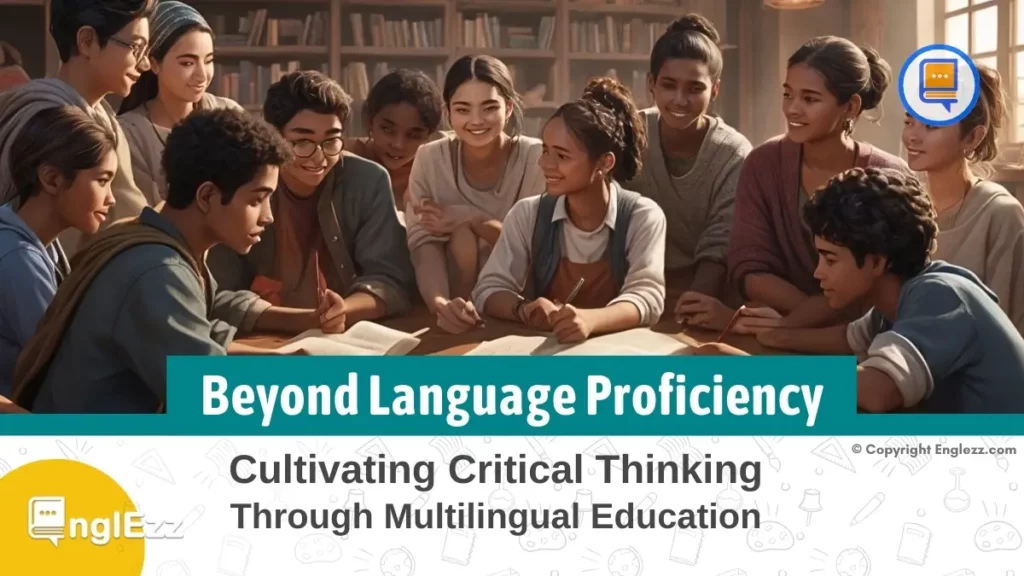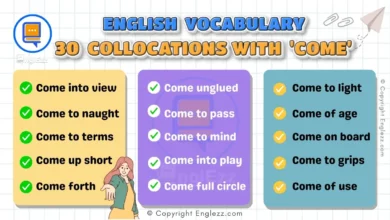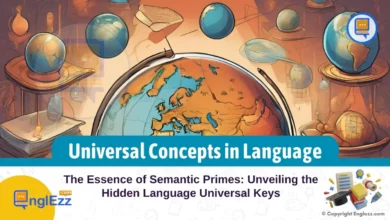In the realm of education, the value of multilingualism transcends mere language proficiency, venturing into the realms of cognitive development and critical thinking. As our world becomes increasingly interconnected and diverse, recognizing the multifaceted benefits of multilingual education is paramount in preparing students for the complexities of a global society.
Through an exploration of varying linguistic systems and cultural perspectives, educators, parents, policymakers, and researchers are delving into the transformative potential of multilingual education beyond traditional language learning paradigms.
Table of Contents
- Beyond Language Proficiency: Cultivating Critical Thinking Through Multilingual Education
- The Role of Multilingual Education in Cognitive Development
- Enhancing Problem-Solving Skills Through Multilingualism
- Promoting Cultural Competence Through Multilingual Experiences
- Leveraging Linguistic Diversity for Enhanced Analytical Thinking
- Strategies for Implementing Effective Multilingual Education Programs
- Final Thoughts: Empowering Students Through Multilinguistic Pathways
- Final Tips
- Nurturing Tomorrow’s Critical Thinking through Multilingual Education
- FAQs: Frequently Asked Questions
- Q: How does exposure to multiple languages enhance critical thinking skills?
- Q: What role does multiculturalism play in developing problem-solving abilities through multilingual education?
- Q: Can implementing multilingual programs improve students’ cultural competence?
- Q: How does multilingualism contribute to analytical thinking beyond language studies?
- Q: What are key considerations for implementing effective multilingual education programs?
Beyond Language Proficiency: Cultivating Critical Thinking Through Multilingual Education
Delving deeper into the intricate tapestry of multilingual education unveils a dynamic process that goes far beyond linguistic competence. By engaging with diverse languages and cultures, students are not only expanding their communicative abilities but are also honing critical thinking skills essential for navigating today’s complex world. This journey towards cultivating critical thinkers through a multilingual lens presents an opportunity to foster cognitive flexibility, higher-order thinking skills, and an appreciation for diverse viewpoints.

It is within this rich tapestry of multilingual experiences that students are encouraged to question, interpret, and evaluate information across linguistic boundaries with acuity and nuance. Embracing the cognitive benefits embedded in multilingual education offers a gateway to unlocking new horizons in intellectual growth and intercultural understanding—a journey we embark on with unwavering curiosity and scholarly rigor.
The Role of Multilingual Education in Cognitive Development
Multilingual education serves as a catalyst for developing essential cognitive skills in students by immersing them in the complexities of multiple languages and structures. Through navigating and deciphering various linguistic systems, learners enhance their cognitive flexibility, enabling them to adapt to different communication contexts seamlessly. For instance, bilingual individuals have been shown to exhibit superior cognitive control abilities, such as task-switching and inhibitory control, compared to monolingual counterparts (Bialystok, 2018). This enhanced cognitive flexibility translates beyond language usage into problem-solving scenarios that require mental agility and adaptability.
Exposure to diverse languages within educational settings not only sharpens linguistic proficiency but also nurtures higher-order thinking skills vital for academic success. When students engage with materials across multiple languages, they are compelled to analyze information critically, draw connections between different sources, and synthesize complex ideas. Research has indicated that multilingual individuals tend to excel in divergent thinking tasks due to their ability to approach problems from varied perspectives (Kroll et al., 2019).
By encouraging students to work through problems using different language frameworks, educators foster the development of analytical skills indispensable for effective decision-making and innovative solutions.
In multilingual environments where students are encouraged to interact with texts, discussions, and assignments across linguistic boundaries, critical thinking flourishes naturally. When learners are prompted to question assumptions, interpret nuances inherent in different languages, and evaluate information from diverse cultural perspectives concurrently, their capacity for critical analysis is heightened.
Associations like the European Centre for Modern Languages showcase how collaborative projects integrating multiple languages promote critical thinking through intercultural understanding (European Commission/EACEA/Eurydice/CEDEFOP, 2019). Thus, embedding multilingual education practices within curricula not only enhances language proficiency but also cultivates students’ abilities to think critically and expansively across various domains.
Enhancing Problem-Solving Skills Through Multilingualism
Multilingual education serves as a catalyst for enhancing students’ problem-solving skills by instilling the ability to approach challenges from diverse linguistic and cultural perspectives. When students engage with problems through multiple languages, they are prompted to think beyond conventional solutions. For example, in a bilingual classroom setting where students are encouraged to tackle mathematical word problems in both English and Spanish, they learn to leverage different linguistic structures and cultural nuances to solve complex equations. This process not only expands their problem-solving repertoire but also nurtures adaptability and creativity in addressing academic challenges.
By immersing students in multilingual environments where information is processed across various languages, schools provide fertile ground for fostering innovative solutions that transcend traditional linguistic boundaries. For instance, in a school project that requires research on environmental issues conducted in different languages, students develop a comprehensive understanding of global challenges and propose holistic solutions that draw upon insights gained from diverse linguistic sources.
These experiences equip learners with the capacity to think critically and inventively when confronted with intricate real-world problems that necessitate multifaceted approaches.
Success stories abound within educational settings where multilingualism takes center stage as an essential component of the learning experience. Schools or programs that prioritize multilingual education often witness remarkable transformations in students’ problem-solving abilities due to the multicultural ethos embedded in their teaching practices.
By embracing a multicultural approach to learning, these institutions create inclusive spaces where diverse perspectives converge harmoniously to enrich problem-solving processes. Such initiatives underscore how multilingual education not only cultivates critical thinkers but also equips them with robust problem-solving skills honed through exposure to varied linguistic and cultural lenses.
Promoting Cultural Competence Through Multilingual Experiences
Multilingual education serves as a gateway for students to transcend linguistic boundaries and delve into the rich tapestry of global cultures. By engaging with diverse languages, students not only bolster their language skills but also develop a profound understanding of varied cultural perspectives. For instance, in immersion programs where students are exposed to languages like Spanish, Mandarin, or Arabic alongside their native tongue, they often develop a broader worldview by navigating the intricacies of different cultures embedded within each language. This exposure not only fosters cultural competence but also promotes tolerance and appreciation for the richness of human diversity.

Furthermore, multilingual experiences in educational settings nurture qualities such as empathy, respect, and curiosity towards unfamiliar cultures. Students who are fluent in multiple languages often exhibit higher levels of intercultural sensitivity and adaptability due to their exposure to diverse linguistic systems. For example, schools that incorporate multilingual literature or activities into their curriculum provide students with opportunities to explore narratives from various cultural backgrounds, fostering a sense of inclusivity and interconnectedness. Such initiatives go beyond language learning by encouraging students to embrace differences and celebrate the mosaic of global identities.
Institutions that integrate multilingual approaches create platforms where students can interact meaningfully with peers from diverse cultural backgrounds. Collaborative projects that require communication across languages serve as catalysts for building bridges between communities and fostering cross-cultural dialogue.
By participating in multicultural environments facilitated by multilingual education, students not only enhance their language proficiency but also develop a deep appreciation for the richness that stems from embracing linguistic diversity. Ultimately, promoting cultural competence through multilingual experiences equips students with the tools needed to navigate an increasingly interconnected world with sensitivity and understanding.
Leveraging Linguistic Diversity for Enhanced Analytical Thinking
Multilingual education serves as a catalyst for enhancing analytical thinking skills among students by exposing them to a wide array of linguistic structures and features. When students engage in comparing and contrasting different languages, they are prompted to think critically about the underlying grammatical rules, vocabulary nuances, and cultural connotations that shape each language system. For instance, a student fluent in English and Spanish may develop heightened analytical abilities when recognizing how the structure of sentence construction differs between the two languages, leading to a deeper understanding of syntax and semantics.
Analyzing diverse language structures not only refines linguistic competencies but also cultivates analytical skills that have transdisciplinary applications. Research indicates that multilingual individuals often exhibit superior executive functions, such as problem-solving and cognitive flexibility, which can positively impact their performance in various academic disciplines beyond language studies. By engaging with multiple languages, students learn to approach complex problems from different perspectives, honing their ability to think creatively and critically across subject areas.
Educational institutions implementing multilingual strategies underscore the notion that linguistic diversity is intrinsically linked to enhanced analytical thinking capacities. Schools or programs incorporating multilingual approaches demonstrate how exposure to varied linguistic frameworks nurtures students’ cognitive agility and sharpens their reasoning skills. Through activities that require students to decipher meanings across languages or analyze semantic differences, educators can foster an environment where analytical thinking becomes intertwined with linguistic proficiency, paving the way for multifaceted cognitive development within a multicultural educational context.
Strategies for Implementing Effective Multilingual Education Programs
Implementing successful multilingual education programs hinges on meticulous strategic planning that not only acknowledges but actively addresses the diverse linguistic needs and backgrounds of student demographics. By conducting comprehensive assessments of student populations, educators can tailor educational approaches that leverage linguistic diversity as a cognitive advantage. For instance, schools in culturally rich areas often develop language immersion programs tailored to specific communities, providing students with a deep-rooted connection to their heritage while fostering critical thinking skills through multilingualism.
Professional development for educators is a cornerstone of effective multilingual education initiatives. Providing teachers with specialized training in multilingual instruction equips them with the pedagogical tools necessary to nurture critical thinking capacities in students across various linguistic contexts. Through workshops, seminars, and ongoing support, educators can refine their strategies for engaging students in meaningful language exploration that transcends rote memorization and delves into analytical reasoning processes fostered by exposure to diverse languages.
Furthermore, collaboration with communities and stakeholders serves as a catalyst for the successful implementation of multilingual education programs geared toward enhancing cognitive development through critical thinking. Partnering with local cultural organizations, businesses, and community leaders can enrich educational experiences by incorporating real-world applications of language skills into the curriculum. For example, joint initiatives between schools and heritage language speakers can provide students with authentic opportunities to engage in dialogues that promote cross-cultural understanding and critical inquiry through multilingual discourse. Such partnerships not only bridge academic theory with practical application but also cultivate a deeper appreciation for diverse linguistic traditions among learners.
Final Thoughts: Empowering Students Through Multilinguistic Pathways
In a world characterized by increasing interconnectedness, the ability to navigate diverse linguistic landscapes is becoming more crucial than ever. Embracing multilingual education unlocks a myriad of cognitive benefits that extend far beyond mere language proficiency. By engaging with multiple languages and cultures, students not only enhance their critical thinking skills but also develop a deep understanding and appreciation for global diversity. For instance, schools that have integrated multilingual approaches have reported higher levels of cultural competence among students, fostering an environment where empathy and respect for varying perspectives thrive.
Educational stakeholders play a vital role in shaping the academic paths of future generations. Prioritizing multilinguistic pathways ensures that students are equipped with the necessary tools to tackle the complexities of our interconnected world. For example, professional development programs focused on enhancing educators’ abilities to deliver high-quality multilingual instruction can significantly impact students’ cognitive development. By investing in strategic planning and collaboration with communities, schools can create environments that nurture critical thinking through linguistic diversity.
By recognizing the cognitive benefits inherent in multilingual education, society paves the way for empowered individuals capable of thriving in diverse settings. As we continue to navigate a global landscape marked by multicultural interactions, fostering critical thinkers through multilinguistic pathways becomes not just advantageous but essential for individual growth and societal progress. Ultimately, embracing and prioritizing multilingual education is a step towards cultivating well-rounded individuals who possess the skills needed to succeed in an increasingly interwoven world.
Final Tips
As educators, parents, policymakers, and researchers navigate the realm of multilingual education for cultivating critical thinkers, here are three key tips to enhance the effectiveness of such programs:
- Prioritize Cross-Curricular Integration: Encourage interdisciplinary connections within multilingual education to reinforce critical thinking skills across various subjects. For instance, a science lesson taught in a second language can challenge students to analyze data differently, fostering adaptability and problem-solving abilities. By integrating languages into subjects beyond traditional language classes, students engage with content from diverse perspectives, enriching their cognitive processes.
- Emphasize Language Comparison: Encourage students to actively compare and contrast linguistic structures across the languages they are learning. This comparative analysis not only enhances their understanding of individual languages but also sharpens their analytical skills. For instance, discussing grammatical differences between two languages can prompt students to think critically about language rules and patterns, laying a foundation for more nuanced cognitive processing.
- Promote Multicultural Experiences: Create opportunities for students to immerse themselves in multicultural experiences that go beyond language instruction. Field trips to cultural events or guest speakers from different linguistic backgrounds can broaden students’ perspectives and cultivate empathy towards diverse cultures. By fostering an environment where cultural appreciation flourishes alongside language acquisition, educators can nurture well-rounded individuals with heightened critical thinking capacities.
By following these tips and tailoring them to specific educational contexts, stakeholders can harness the cognitive benefits of multilingual education to empower students as skilled critical thinkers ready for the complex challenges of our globalized world.
Nurturing Tomorrow’s Critical Thinking through Multilingual Education
In conclusion, the cognitive benefits of multilingual education extend far beyond mere language proficiency, offering students a unique opportunity to develop critical thinking skills essential for success in the complex global landscape. By engaging with diverse linguistic systems and cultural perspectives, students in multilingual environments are challenged to think critically, analyze information from various sources, and approach problems creatively. These experiences foster cognitive flexibility, higher-order thinking skills, problem-solving abilities, and cultural competence among learners. The cultivation of well-rounded individuals capable of navigating diverse linguistic landscapes is a testament to the transformative power of multilinguistic pathways in education.
As educators, parents, policymakers, and researchers continue to explore the potential of multilingual education in fostering critical thinking skills among students, it becomes increasingly clear that embracing linguistic diversity offers a pathway to empowering individuals for the challenges of an interconnected world. Through effective implementation strategies and ongoing professional development for educators, schools can create enriching multilingual environments that stimulate analytical thinking capacities. By prioritizing multilingual education as a cornerstone of holistic learning experiences, educational stakeholders pave the way for nurturing future generations of adept critical thinkers prepared to thrive in an ever-evolving global society.
FAQs: Frequently Asked Questions
Q: How does exposure to multiple languages enhance critical thinking skills?
A: Exposure to multiple languages challenges students to analyze information from diverse sources and fosters cognitive flexibility essential for critical thinking.
Q: What role does multiculturalism play in developing problem-solving abilities through multilingual education?
A: Multiculturalism encourages students to approach problems from different linguistic angles, leading to creative solutions transcending traditional boundaries.
Q: Can implementing multilingual programs improve students’ cultural competence?
A: Yes, by engaging with diverse linguistic systems, students gain empathy and respect for cultural differences, promoting mutual understanding.
Q: How does multilingualism contribute to analytical thinking beyond language studies?
A: Analyzing language structures sharpens analytical skills that can transfer across various academic disciplines beyond language studies.
Q: What are key considerations for implementing effective multilingual education programs?
A: Effective programs require strategic planning considering diverse student backgrounds and ongoing professional development for educators aiming at enhancing critical thinking skills.








